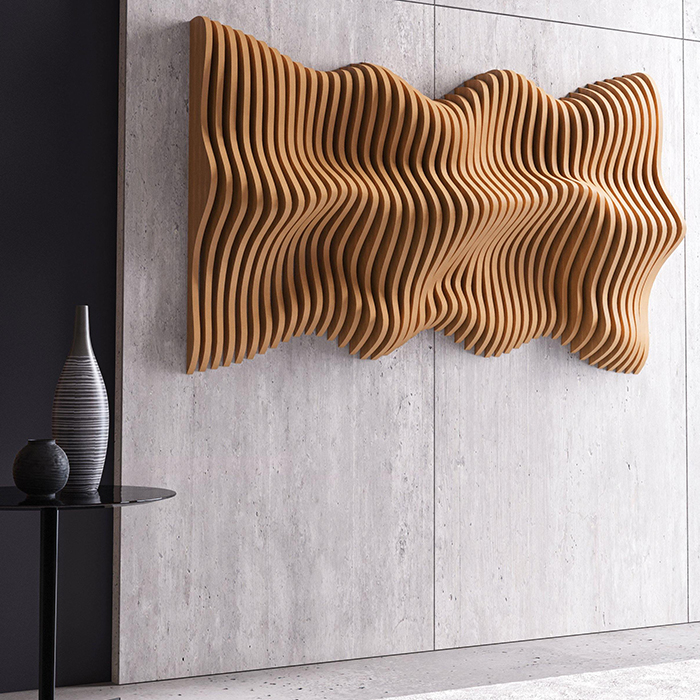Introduction to Parametric Design
In the realm of modern design, parametric principles have emerged as a powerful force, unlocking a realm of boundless creativity and innovation. From the intricate patterns of parametric wall art to the functional elegance of parametric furniture and the awe-inspiring beauty of parametric sculpture, this design approach transcends conventional boundaries, offering a new frontier for artistic expression.
Parametric Wall Art: Blending Form and Function
Parametric wall art exemplifies the marriage of form and function, where geometric patterns and intricate designs adorn interior spaces. These artworks not only serve as decorative elements but also evoke a sense of awe and wonder. Examples range from abstract compositions to intricate geometric patterns, each showcasing the versatility and beauty of parametric design.
Parametric Furniture: Innovative Design Solutions
In the realm of furniture design, parametric principles offer innovative solutions for both aesthetics and functionality. From chairs with fluid forms to tables with intricate patterns, parametric pushes the boundaries of conventional design. The advantages of parametric furniture include enhanced ergonomics, structural efficiency, and customization options, making it a popular choice among designers and consumers alike.
Exploring the Intersection of Art and Functionality
Parametric design bridges the gap between art and functionality, blurring the lines between form and function. Case studies of furniture pieces doubling as art illustrate this intersection, where sculptural elegance meets practical utility. Examples include chairs that resemble works of art while providing ergonomic support and tables that serve as conversation pieces while offering functional surfaces.
Parametric Sculpture: Transforming Spaces with Artistry
Parametric sculpture transcends traditional notions of art, offering dynamic and interactive experiences for viewers. These sculptural works serve as focal points in architectural landscapes, adding depth and dimension to urban environments. Examples range from large-scale installations to smaller, more intimate pieces, each showcasing the transformative power of parametric design on architectural aesthetics.
The Role of Technology in Parametric Design
Advancements in technology have played a pivotal role in the evolution of parametric design. Specialized software and digital fabrication techniques empower designers to explore new realms of creativity and innovation. Tools like Grasshopper and Rhino enable designers to manipulate complex geometries with ease, while 3D printing and CNC milling allow for the realization of intricate designs with precision and efficiency.
Challenges and Considerations in Parametric Design
Despite its potential, parametric design poses challenges such as complexity and learning curve. However, with the right tools and training, designers can harness its full potential to create awe-inspiring works of art. Balancing creativity with practicality is another consideration, as designers must ensure that parametric designs are not only visually striking but also functional and sustainable.
Parametric Design in Contemporary Architecture
Parametric elements have become ubiquitous in contemporary architecture, with iconic structures showcasing the power of computational design. From curvilinear facades to intricate structural systems, parametric design has redefined architectural aesthetics. Examples include the Guggenheim Museum Bilbao and the Heydar Aliyev Center, both of which feature parametric elements that push the boundaries of form and function.
The Future of Parametric Design: Trends and Predictions
As technology continues to advance, the future of parametric design holds promise for even greater innovation. Emerging trends such as generative design and bio-mimicry are set to revolutionize the way we conceive and create. With sustainability becoming an increasingly important consideration, parametric design offers new opportunities for environmentally conscious design solutions.
Conclusion
In conclusion, parametric design represents a paradigm shift in the world of art and design, offering a canvas for boundless creativity and innovation. From wall art to furniture and sculpture, the possibilities are truly endless, inviting us to explore new realms of artistic expression and imagination. As we look to the future, parametric design promises to continue pushing the boundaries of what’s possible, inspiring awe and admiration in equal measure.
FAQs About Parametric Design
Q1. What sets parametric design apart from traditional design approaches?
A1. Parametric design utilizes algorithms and computational tools to generate complex forms and patterns, allowing for greater flexibility and creativity.
Q2. How accessible is parametric design for aspiring designers?
A2. While parametric design can be complex, there are various resources and tutorials available online to help beginners get started.
Q3. Are parametric design principles limited to specific materials or mediums?
A3. Not at all. Parametric design can be applied to a wide range of materials, from wood and metal to fabric and glass, offering endless possibilities for experimentation.
Q4. Is parametric design only suitable for large-scale projects?
A4. Not necessarily. Parametric principles can be applied to projects of any scale, from small-scale furniture pieces to monumental architectural structures.
Q5. What role does sustainability play in parametric design?
A5. Parametric design can facilitate sustainable practices by optimizing material usage and minimizing waste through precise computational modeling.


